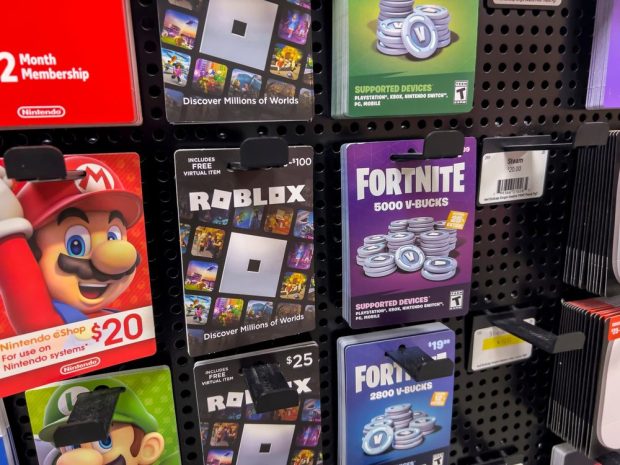Virtual Payments Key to Future Success of Metaverse and Gaming

The gaming industry is set to play a prominent role in the metaverse’s early development.
The metaverse, for its part, will similarly transform future gaming experiences.
That’s beyond the two-way impact multiplayer games and platforms like Minecraft, Fortnite, Roblox and others have already had in socializing the concept of virtual worlds where players meet to play games, interact using personalized avatars and transact across digitally native ecosystems into the mainstream.
At the center of it all, and essential to making the most of the emergent metaverse opportunity, regardless of industry, is establishing a future-fit payments infrastructure for this new merger of spatial computing and the internet that aims to become the next platform for human connectivity.
The metaverse will fundamentally consolidate the various elements of daily life through a vast system of interconnected networks, combining real world and virtual occasions into a comprehensive digital landscape that enables interactive, immersive, and social experiences across 3D web spaces.
The key to bridging the gap between existing physical and emergent digital worlds, as well as critical to linking metaverse platforms, is establishing a functional, flexible, and agile payments architecture.
That’s according to research in PYMNTS’ January 2023 playbook, “Enter the Metaverse: The Next Frontier of Digital Commerce,” which shows how innovators are using payments to make the most of the metaverse opportunity.
Just as in-game purchases transformed the gaming industry, virtual transaction capabilities will define the broader use cases of the metaverse as well establish it as a lucrative new medium for generating revenue.
Web3’s Gaming Engine
The metaverse represents a combinatorial technology powered by a confluence of emergent, next-generation capabilities, including artificial intelligence (AI), machine learning (ML), edge computing, virtual reality (VR), augmented reality (AR), advanced real-time connectivity, geospatial 3D graphic systems, and other still-nascent, future-fit advances.
To date, innovative VR and AR technologies are still largely the province of gaming — although, as previously covered by PYMNTS, burgeoning applications across sectors like Industry 4.0 and healthcare are increasingly gaining steam and appear set to enter the mainstream in the near future.
Critical to the immersive scale of the metaverse is the application of real-world physics to 3D digital assets, ensuring that rendered objects behave similarly to how they would in the physical world as entities subject to natural laws.
Coders or software engineers working for gaming studios have the most robust experience in programming virtual worlds that are dependent on tangible cause-and-effect frameworks, meaning that so-called “gaming engine” technologies will be instrumental to developing usable 3D metaverse platforms that rest upon supportive, adaptable architectures driven by collaborative geospatial computing.
Another structural element of gaming that will be key to metaverse growth is that of effective in-game payment systems supporting add-on virtual assets such as skins, clothes, weapons, jewelry and other accessories that, once purchased, travel with players’ digital characters across platforms and allow users to express themselves individually as gameplay becomes a digital stand-in for real-world social spaces and communities.
The metaverse will take this new eCommerce landscape, centered around portable digital assets, including non-fungible tokens (NFTs), to new heights.
Transacting Across the Metaverse
To the chagrin of some of their players, certain video games have tapped in-game purchases and virtual wearables as a key revenue driver.
Within the metaverse, many opportunities exist for users to generate revenue streams. Play-to-earn (P2E) is one way gaming studios and other companies are approaching the potential of the metaverse by allowing users to earn assets through quests and other tasks, then providing a marketplace for those assets to be bought and sold.
Quick, frictionless connections to banking infrastructures help fuel these microtransactions, allowing gamers and other platform users to make real-time payments across games, virtual worlds or digital marketplaces.
Additionally, most of the most common metaverse platforms are built upon blockchain technology, making cryptocurrency payment capabilities a natural complement.
Because the metaverse is still in its infancy, businesses need to ensure their payments infrastructure can support multiple payments options and allow the addition and integration of new methods as they arise.
PYMNTS’ February 2023 report “Navigating The New eCommerce Landscape: Modernizing Payments For Marketplaces, Gaming, The Metaverse And Beyond,” finds that 40% of millennials and Gen Z consumers express a high interest in the metaverse.
These digitally native generational cohorts have a high familiarity with the use of digital wallets and are comfortable transacting virtually and moving securely between digital platforms, using their online identities as transaction triggers.
Just as in the physical world, PYMNTS research posits that real-time payment capabilities will be at the heart of metaverse innovations.
While Meta is losing over $1 billion a month on its metaverse strategy per the company’s latest financial results, the tech giant intends to continue laying the groundwork for realizing the metaverse’s potential.
The road to operational metaverse maturity is long, but there may be a pot of gold waiting at the end.
For all PYMNTS crypto coverage, subscribe to the daily Crypto Newsletter.
